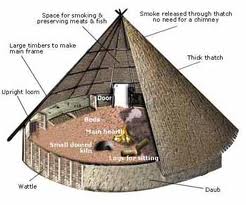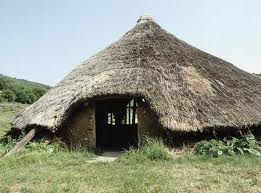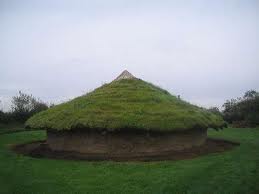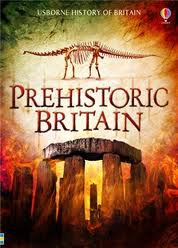| Головна » Статті » Теоретична база викладача англійської мови |
| У розділі матеріалів: 8 Показано матеріалів: 1-8 |
  The Iron Age The Iron Age(around 750 BC – 43 AD) Main article: British Iron Age In around 750 BC iron working techniques reached Britain from southern Europe. Iron was stronger and more plentiful than bronze, and its introduction marks the beginning of the Iron Age. Iron working revolutionised many aspects of life, most importantly agriculture. Iron tipped ploughs could churn up land far more quickly and deeply than older wooden or bronze ones, and iron axes could clear forest land far more efficiently for agriculture. There was a landscape of arable, pasture and managed woodland. There were many enclosed settlements and land ownership was important. |
 The Bronze Age The Bronze Age(around 2200 to 750 BC) Main article: Bronze Age Britain This period can be sub-divided into an earlier phase (2300 to 1200) and a later one (1200 – 700). Beaker pottery appears in England around 2475–2315 cal BC[6] along with flat axes and burial practices of inhumation. With the revised Stonehenge chronology, this is after the Sarsen Circle and trilithons were erected at Stonehenge. Believed to be of Iberian origin, (modern day Spain and Portugal), Beaker techniques brought to Britain the skill of refining metal. At first the users made items from copper, but from around 2,150 BC smiths had discovered how to make bronze (which was much harder than copper) by mixing copper with a small amount of tin. With this discovery, the Bronze Age arrived in Britain. Over the next thousand years, bronze gradually replaced stone as the main material for tool and weapon making |
|
The Neolithic (4000 – 2000 BC) The Neolithic was the period of domestication of plants and animals. A debate is currently being waged between those who believe that the introduction of farming and a sedentary lifestyle was brought about by resident peoples adopting new practices or by continental invaders bringing their culture with them and, to some degree, replacing the indigenous populations. Analysis of the mitochondrial DNA of modern European populations shows that over 80% are descended in the female line from European hunter-gatherers. Less than 20% are descended in the female line from Neolithic farmers from the Middle East. The percentage in Britain is smaller at around 11% with the paternal varying from 10–100% across the country, being higher in the east[citation needed]. However, as already noted, this situation is reversed when looking at English and Scottish Y-chromosomes, which show a large degree of population replacement during the Anglo-Saxon invasion and a nearly complete masking over of whatever population movement (or lack of it) went before on these two countries.[2][3] Looking from a more Europe-wide standpoint, researchers at Stanford University have found overlapping cultural and genetic evidence that supports the theory that migration was, at least, partially responsible for the Neolithic Revolution in Northern Europe (including Britain).[5] The science of genetic anthropology is changing very fast and a clear picture across the whole of human occupation of Britain has yet to emerge. |
|
Mesolithic (around 10,000 to 5500 years ago) Around 10,000 years ago the ice age finally ended and the Holocene era began. Temperatures rose, probably to levels similar to those today, and forests expanded further. By 9,500 years ago, the rising sea levels caused by the melting glaciers cut Britain off from Ireland, and by around 6500 years ago continental Europe was cut off for the last time. The warmer climate changed the Arctic environment to one of pine, birch, and alder forest; this less open landscape was less conducive to the large herds of reindeer and wild horse that had previously sustained humans. Those animals were replaced in people's diets by pig and less social animals such as elk, red deer, roe deer, wild boar and aurochs (wild cattle) which would have required different hunting techniques in order to be effectively exploited. Tools changed to incorporate barbs which could snag the flesh of a hunted animal, making it harder for it to escape alive. Tiny microliths were developed for hafting onto harpoons and spears. Woodworking tools such as adzes appear in the archaeological record, although some flint blade types remained similar to their Palaeolithic predecessors. The dog was domesticated because of its benefits during hunting and the wetland environments created by the warmer weather would have been a rich source of fish and game. |
|
Upper Palaeolithic (around 40,000 – 10,000 years ago) This period is often divided into three subperiods: the Early Upper Palaeolithic (before the main glacial period), the Middle Upper Palaeolithic (the main glacial period) and the Late Upper Palaeolithic (after the main glacial period). Evidence of Neanderthal occupation of Britain is limited and by 30,000 BC the first signs of modern human (Homo sapiens) activity, the Aurignacian industry, are known. The most famous example from this period is the burial of the "Red Lady of Paviland" (actually now known to be a man) in modern day coastal south Wales. A final ice age covered Britain between around 70,000 and 10,000 years ago with an extreme cold snap between 22,000 and 13,000 years ago called the Dimlington stadial (with the Last Glacial Maximum at around 20,000 years ago). |
|
Lower Palaeolithic (up to 250,000 years ago) There is evidence from bones and flint tools found in coastal deposits near Happisburgh in Norfolk and Pakefield in Suffolk that a species of Homo was present in what is now Britain around 700,000 years ago. At this time, southern and eastern Britain were linked to continental Europe by a wide land bridge allowing humans to move freely. The current position of the English Channel was a large river flowing westwards and fed by tributaries that would later become the Thames and Seine. Reconstructing this ancient environment has provided clues to the route first visitors took to arrive at what was then a peninsula of the Eurasian continent. Archaeologists have found a string of early sites located close to the route of a now lost watercourse named the Bytham River which indicate that it was exploited as the earliest route west into Britain. |
|
Palaeolithic (Old Stone Age) Britain is the period of the earliest known occupation of Britain by man. This huge length of time saw many changes in the environment, encompassing several glacial and interglacial periods which greatly affected human settlement in the region. Providing dating for this distant period of time is difficult and contentious. The inhabitants of the region at this time were bands of hunter-gatherers who roamed all over northern Europe following herds of animals or supported themselves by fishing. Mitochondrial DNA (mtDNA) analysis suggests that 21% of the maternal lines in modern Britain came in the preglacial period and 51% in the Late Upper Palaeolithic[citation needed]. |
 Prehistoric Britain was a period in the human occupation of Great Britain that was the later part of prehistory, conventionally ending with the Roman invasion of Britain in AD 43, though some historical information is available about Britain before this. The period of prehistory prior to occupation by the genus Homo is part of the Geology of the British Isles. The prehistoric period is conventionally divided into a number of smaller periods but their boundaries are uncertain and the changes between them are gradual. The times of change are generally different from those of continental Europe. Prehistoric Britain was a period in the human occupation of Great Britain that was the later part of prehistory, conventionally ending with the Roman invasion of Britain in AD 43, though some historical information is available about Britain before this. The period of prehistory prior to occupation by the genus Homo is part of the Geology of the British Isles. The prehistoric period is conventionally divided into a number of smaller periods but their boundaries are uncertain and the changes between them are gradual. The times of change are generally different from those of continental Europe. |
